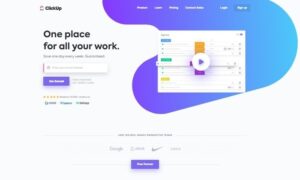My dad used to tell me that the one thing you invest in for your car is the tires. I had a habit of asking the garage for the cheapest tires they had, but my dad would say “that rubber is the only thing between you and the road”. He had a point, and today I invest in those tires to get me to my destination safer.
There’s a similar trap that search marketers and SEOs can easily fall into. In our fast-paced day-to-day lives, we can often underestimate the power of copy, even though, like my tires and the road, it’s the only thing between our business and our customers. Much like my tires, if you don’t invest in it, you’re in for a bad time.
To that end, I’ve used SEO Testing to trial different copy types in product page titles, and want to share the results of that test.
The hypothesis
Customers are more likely to click organic search engine results featuring content that is commercially focused, using language like “free” or “best value”.
Every good test starts with a hypothesis. It’s nothing more than an idea that I want to test and learn from. While there’s an outcome I expect, the data is all I really care about. That’s where SEO Testing comes in.
The test
The test itself had some simple steps. I was updating page titles across a range of mobile phone product pages, so that these would appear in the SERPs in front of our customers. To measure success, the primary KPI was CTR, observed in Google Search Console.
The test would run across all phones on the Three website for six weeks. The control CTR data was collected from the six weeks prior to updating the page titles.
Instead of simply changing page titles to commercial content, I decided to hedge my bets a little and cover the spread with some additional test parameters. If commercial copy didn’t work, what copy did connect with our customers the best?
In addition to a bucket of page titles focused on commercial content, I also added two “backup buckets” for functional and emotional copy.
I used the new SEO Testing Group Test functionality to create three groups:
-
Commercial content page titles
-
Functional content page titles
-
Emotional content page titles
Commercial content focused on appealing to the financial aspects of a purchase decision. Functional copy stuck to the facts and just simply said what you would be finding on the page you clicked through to. Emotional took a softer and “fluffier” approach.
Here are some examples of the content we used:
-
Commercial: iPhone 12 Pro Max | Buy Now At Our Best Ever Price | Three
-
Functional: Samsung Galaxy A02s | A Powerful Entry Level Phone | Three
-
Emotional: iPhone 11 | Get The iPhone You Always Wanted | Three

Google being Google
Just as this test was ending, Google started to use their AI-power to rewrite page titles, steering away from using the provided page titles less and less. Fortunately, this test was finishing at the same time Google was rolling this functionality out, and to the best of my knowledge, the test was not impacted by the update. I was running the test in the Irish market, which had seen very few page title re-writes at the time.
Regardless, at the core of this test is consumer psychology. Even if Google never pulls in another page title that I write for the rest of my days, the reason people clicked, or didn’t click, on content during the test matters. It’s a data-based example of how your potential customers respond to the words you put on your page, and why it’s important you invest in them — just like your tires.
The results
You shouldn’t run a test and then check it every day. Just hit start and do your best to forget about it.
I ignored my own advice and regularly checked the data.
In the early stages the hypothesis held up, but after a few more days a clear trend emerged. What did I learn here? The start date of the test isn’t necessarily the date the page titles change. It takes time for Google to crawl and re-index the new content.
After a few more days, the trends started to change completely and by the end of the six-week test period, the hypothesis failed. And that’s okay. In fact, that’s exciting, especially because contingency was baked into the test.

Customers responded best to the simple functional copy group, evident through a 9% increase in CTR for this group. Customers also emphatically rejected copy with a softer, emotional focus, the clearest outcome of the test with a 31% reduction in CTR (which is, for me, the most interesting result).
If I had just run the commercial group, I would have been left with very few learnings thanks to a paltry 1% increase in CTR.
It’s an important side note to include that this test was being carried out after a CMS migration, which led to automated page titles being generated and pulled into Google. It was an unfortunate by-product of an otherwise successful migration that took some time to resolve. Organic CTR did drop by approximately 21% on monitored product pages for a period of time immediately after the migration, due to the automatically generated page titles appearing spammy.

So, this test was more than a test, it was also a fix.
But that meant the control copy feeding into Google was automatically generated and uniform. Despite this, emotional copy led to a further 31% drop in click through rate. I was shocked by this finding. It meant that the automatically generated page titles that needed a fix and already led to a drop, were performing better than the emotional page title content.
The key takeaway
This test taught me a lot, but I want to focus on the most transferable elements instead of the vertical-specific.
Content matters. Whether it’s a landing page, a page title or a search ad, the words you choose will be read by someone at some stage, and impact their decision-making. We so often focus on sales conversion, that we forget the micro-conversions along the way that turn a searcher into a customer.
Test everything. I could have just trusted my gut, said focus on the sales language, and been done. But instead, I opted to test a few ideas out at once to find what worked in the real world, not just what I felt or thought would work.
Check your tires. Just a friendly reminder that it’s worth checking your tires and investing in good ones.


